Claude Debussy: Clair de Lune (Moonlight), 1890, reworked 1905.
Listen to the author reading the text
A BACKWARDS HISTORY
 Proust, speaking of World War I, writes of the “unchanged antique splendor of a moon cruelly, mysteriously serene, which poured the useless beauty of its light on monuments that were still intact.” Note the similarity between this passage and Verlaine’s poems below.
Proust, speaking of World War I, writes of the “unchanged antique splendor of a moon cruelly, mysteriously serene, which poured the useless beauty of its light on monuments that were still intact.” Note the similarity between this passage and Verlaine’s poems below.
In 1905 the impetus to war was building, the tensions palpable, especially to artists. So in the glimmer of Debussy’s mysterious moon, borrowed from Verlaine and shining on outmoded monuments, a passé scene which exists to this day in Paris, can be found death, meaninglessness, and implacable human hatred, all of it tucked neatly away behind the serenity of the statuesque chords and moonbeam arpeggios, rolling in the bass the way they slant similarly in the trees, as if arpeggios are Debussy’s shorthand for night filtered through leaves.
Debussy is writing his old-fashioned harmonies in the face of Stravinsky, of armed juggernauts massing which will destroy the notion of universal good will, of national harmony, so it is no wonder that a catchy tune had become an anthem for drunken sailors in Viennese seraglios, not a truth which an intellectual could take seriously, as it had been earlier for Mozart, Liszt, Johann Strauss, and Brahms, who spent his young years playing background music in just those brothels. Later on, Bartók, Dvorak, and Smetana restored folk music to its position as the root of serious music, again in answer to the question, where do melodies begin?
My teacher used to say you had to play Scriabin to understand Mozart. That is, you had to know what chain of diabolical creation Mozart inspired in order to understand what was, to the great minds that followed, silently obvious in his seemingly naive melodies. And so, suspecting what was coming, Debussy may have been aware that he was celebrating the past even as the world was losing it.
Certainly he was accused of being a recidivist, someone who was dredging up melodramatic overwrought ancient techniques out of fear of the modernity which surrounded him. Stravinsky was writing music that would change the world at the same time as Debussy was writing old-fashioned forms like Sarabandes.
Of course we now realize that Debussy’s harmonies were unique, that geniuses often better the achievements of the past by redoing them with hindsight, and that a great macabre irony existed behind his music’s childlike facade. You have to learn history and music backwards. Schubert’s dances in his final sonatas, Strauss’s Also Sprach Zarathustra are dances of death, as is Debussy’s soft lunar wind stirring the trees of revolution, an emotion the French had after all invented.
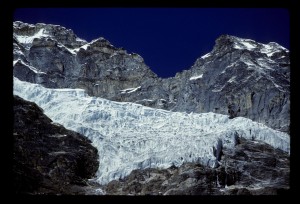 Clair de Lune comes at the beginning of the maelstrom. It hides Boulez and Schönberg under its marble skirts.
Clair de Lune comes at the beginning of the maelstrom. It hides Boulez and Schönberg under its marble skirts.
Familiarity has overexposed Debussy’s brief patch of moonlight like an infrared photograph, precisely because it is the premier example of silence in music, of the absolute stillness to be found in the pools of D flat starlight, its opening thirds surrounded as they are by the space and calm of balmy summer night.
Chords materialize out of the dark, that void which preexisted existence, so that we are conscious of life before unconsciousness, the underpinnings of all life. As Richard II says, “Nor I, nor any man that but man is, with nothing shall be pleased till he be eased with being nothing.”
That is, until we understand the nature of the void, the abyss, the gulf, the chasm, until we are content with perfect silence, we cannot begin to understand what each drop of rain might add. It is like the short story by Algernon Blackwood, “The Reeds,” where terrified hikers by the Danube try to make their minds a perfect blank so a monster cannot focus on their thoughts; they find it impossible.
Paul Roberts (see “Books”) additionally feels that Debussy must have had the dark moonlit landscapes of Watteau in mind as a texture which music might suggest.
The chords hang in the void, clinging to each other for dear life, because there is nothing else. Debussy achieves this effect by linking the notes together by slurs and other tricks, such as shared “flags,” the little lines that proceed blissfully up from the notes themselves. The notes begin to linger even after the next chord has entered. If you listen closely, you can hear a prior note suspended over a newer arrival. Chords linger beyond their musical notation, represented only by a single note tied by a slur line into the following measure.
The harmonies build until a small world of associations gathers like the shadows of dark branches on grey moonlit grass, and a crescendo is reached, but it is a reverse crescendo, because instead of a crashing climax, instead an immense, quiet, but vast octave echoes in the deep bass, afloat underneath the accumulated cumulus chords tiptoeing down from the sky, like lighthouses that silhouette the clouds: endless, soundless.
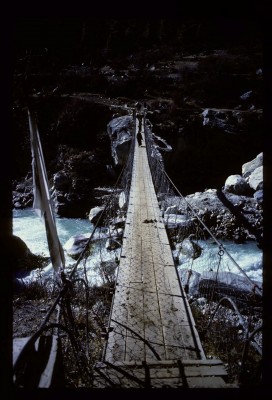 The subliminal and numinal structure of Clair de Lune creates in the assonances of music the dances between art and nature which Baudelaire described in his 1845 poem, Correspondances.
The subliminal and numinal structure of Clair de Lune creates in the assonances of music the dances between art and nature which Baudelaire described in his 1845 poem, Correspondances.
Noam Chomsky, in his Language and Mind, has developed the principle that there is a mental system which enables us to verbalize what we feel. Leonard Bernstein in The Unanswered Question has extended that “universal grammar” to include music. There are underpinnings in music that tell a story, whether or not the piece is purely structural, such as a Bach fugue, or has a romantic “program,” that is, a hidden story which notes imitate onomatopoetically, such as a legend by Liszt.
Baudelaire wrote Correspondances several years after Chopin wrote his Nocturnes, but the relativity of all things was in the air. Liszt was writing his musical portraits, The Transcendental Etudes, at this time. Baudelaire felt that nature was a forest of symbols, which we traverse through poetry, which is composed of words which expand on already infinite objects. Mallarmé’s 1876 poem, Afternoon of a Faun, stressed the similarities between language and music, to the point that certain lines are there only for their music, not their sense. [See in Volume 18, “Music and Poetry Coupled,” which discusses the similarities of Debussy’s 1892 musical version to Mallarmé’s original poem.]
The abuse of free association in describing music linguistically led to austere German theories of pure form, such as Goethe’s novella, Elective Affinities, in which all judgmental descriptions were removed, leading to the French noveau roman. We have continued to eviscerate the emotional roots of music, and developed performance practices which are frequently bowdlerized, censored of their compositional inspirations, a great loss.
As Mallarmé said, writers must take music away from the musicians and bring it back to its true source, the intellect. In Volume 11’s word fugues, I use the musical codes of repetition, inversion, and imitation in poems, so that words make a music sprung from sound, while maintaining a modicum of sense, just in case God is rational. As Claudius says, words without thoughts never to heaven go.
So Debussy’s chords, which remind me of Marcel Duchamp’s cubist Nude Descending a Staircase, photons and fragments of broken light scattered through trees which dump gently down the staircase of the sky, these chords are the sound of silence, the representation of what noiselessness might sound like.
The low bass octave, called a pedal point, stands in for Debussy’s primordial soup, for the first stirrings of life which have been invented by the phrases and cubist smatterings of noise which have come before, growing until they produce a real tone. Debussy has improvised something from nothing.
When the drum strike of the bass sounds, the treble moon springs from it instantly, as if on the rebound, a kind of sprung rhythm, so the extreme bass seems to leap up into the heights, the high notes springing up from the low note, a kind of syncopation, where the second note follows the first too rapidly, as if part of it, Eve created from Adam’s rib, the whole reach of the piano linked together by the staggered rhythm of these two notes.
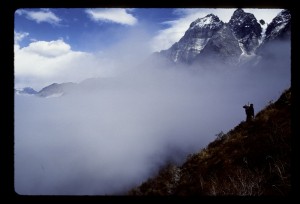 So two unique spaces, separated by the length of the piano, are joined together by time, by a kind of chronological slur, space and time in a pre-Einsteinian relativity, and indeed Debussy makes this clear by indicating that the two notes are to be played out of the time signature of the piece. By writing the number “2” above them, he indicates that the two notes are to occupy the space of one note.
So two unique spaces, separated by the length of the piano, are joined together by time, by a kind of chronological slur, space and time in a pre-Einsteinian relativity, and indeed Debussy makes this clear by indicating that the two notes are to be played out of the time signature of the piece. By writing the number “2” above them, he indicates that the two notes are to occupy the space of one note.
As the chords descend from the sky in groups of three, the way we trip downstairs, the last trip has a small skip in it, where the chord, instead of sinking down, leaps up briefly before going down to the next obvious note. The little skip up is like wind shaking the shadows on the ground, or like a sudden ripple on a pond, and Debussy indicates its presence again by writing the number 2 above two bracketed notes, lifting them out of the inevitable rhythm of the descent and creating a tiny cardiac arrhythmia, a small skip of a heartbeat. This skip has been present from the simple beginning, you might notice on re-listening, when about eight seconds in there is a little birdlike hop upwards.
Later, when bass arpeggios appear under the melody to strengthen it and emphasize that the moon has arrived at an identity, this same skip will appear again, now part of the main rhythm, not just a throwaway line, showing that, for Debussy as for Beethoven, a small overlooked motivic tic in the beginning of a piece can metamorphose into a full-blown incident within a page or two.
That is, music has a deep, unconscious structure which becomes more than a scaffolding on which the meaning of a piece is hung: the scaffolding dictates and becomes the meaning, as the accidental events of our lives often become elements which shape our ends. A haphazard kiss becomes a marriage, a gesture becomes a lawsuit, a flick of the wheel kills.
By describing such random coincidence musically, and by demonstrating how its importance emerges, music is telling us a story as much as any Greek drama: it is a parable from which we can derive our own rules, if we can only understand the language.
Rather than a tale told by an idiot, it is a clue hidden by a genius: these hints can change our lives, if we can find them. They pass in the music in a second, but the pianist has to memorize them and understand why the rhythm changes, so days may be spent on such transient detail, and we have to ask ourselves why Debussy should have written it that way, and gradually a philosophy unfolds, disguised over the years in simple notations, like a dead language discovered by children.
Note that when the piece seems to speed up and turn a bit harsh, it is because the key has changed briefly to E major, a more trumpet-like tonality, before disillusioned steely thirds sidle down the sky to come to rest on a quiet spot, maybe a pond, and the bass becomes soothing, a steady oscillation back and forth. The arpeggios diminish and the initial theme returns, this time with fragments of the arpeggios present, a reminder of its rippling days of dappled glory.
Richard Wilbur captures a similar moment at the end of his wonderful poem, Walking To Sleep:
Still, if you are in luck, you may be granted,
As, inland, one can sometimes smell the sea,
A moment’s perfect carelessness, in which
To stumble a few steps and sink to sleep
In the same clearing where, in the old story,
A holy man discovered Vishnu sleeping,
Wrapped in his maya, dreaming by a pool
On whose calm face all images whatever
Lay clear, unfathomed, taken as they came.
The arpeggios return, really without a melody, until you realize that the harmony is the melody, that the cascading moonlight is the point, not the pathetic fallacy of love it falsely inspires: our joys and despairs have nothing to do with the calm workings of the wiser world. The fragments subside, and the simple chords reach poignantly for the sky, lost moon rays trying to beam up. Here the sense of sadness is most obvious, at least to me, and the swan song for lost love under the moonlight becomes almost articulate.
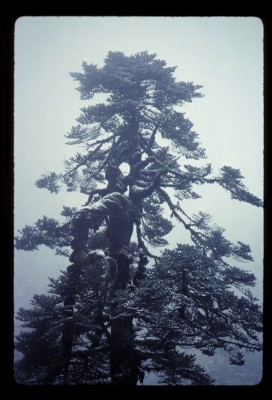 The notes rise and disappear: but one lone chord remains after the arpeggiated beams have dissipated as the moon sets. Something has been said, something has been created, something remains, as in the Harmonies du Soir (track 9).
The notes rise and disappear: but one lone chord remains after the arpeggiated beams have dissipated as the moon sets. Something has been said, something has been created, something remains, as in the Harmonies du Soir (track 9).
I am reminded of Noam Chomsky’s grammatical residue. That is, St. Paul said, “Do not fear that one of Thebes is damned, do not presume that one of Thebes is saved.” Mathematically the negative statement cancels out the positive one, the verbs cancel, the adjectives cancel. So nothing has been said, strictly speaking; but of course, St. Paul has said that we should walk gingerly and hope humbly, a kind of golden mean.
So the river flows, the moon glows, and from harmony emerges humanity.
Debussy found Verlaine’s poem, Clair de Lune, to be the verbal epitome of his composition, and so adopted its title. Here is the poem:
CLAIR DE LUNE
Votre âme est un paysage choisi
Que vont charmant masques et bergamasques
Jouant du luth et dansant et quasi
Tristes sous leurs déguisements fantasques.
Tout en chantant sur le mode mineur
L’amour vainqueur et la vie opportune,
Ils n’ont pas l’air de croire à leur bonheur
Et leur chanson se mêle au clair de lune,
Au calme clair de lune triste et beau
Qui fait rêver les oiseaux dans les arbres
Et sangloter d’extase les jets d’eau,
Les grands jets d’eau sveltes parmi les marbres.
A literal translation would be:
MOONLIGHT
Your soul is a chosen landscape
Where there are charming masks and masques
Playing the lute and dancing and half
Sad under their fantastical disguises.
All in chanting in the minor mode
Of conquering love and the fortunate life,
They don’t have the air of believing in their happiness
And their song mingles with the moonlight,
With the calm light of the moon, sad and good,
Which makes the birds dream in the trees
And the fountains sob with ecstasy,
The huge, svelte fountains among the statues.
My own free translation:
HYDRANTS
Our whole life is a forged pastel
Of make-believe actors and grinning frauds
Humming and twisting with made-up broads
In their fake, fantastic Copa from hell,
Lip-syncing disco by Donna Summer
About safer sex and the happier hour,
Where beer is bitter and faces are sour,
And nothing matters as long as it’s summer,
The long silent summer, sad and bright,
Which makes the squirrels dream in the trees
And the open hydrants hiss in the breeze,
The big public hydrants spraying moonlight.
This is my interpretation of the composer Debussy interpreting the poet Verlaine interpreting the painter Watteau, all presumably trying to capture the passion and pity of moonlight and the disaster of the love it inspires. The enormous passion in the repetition of the hydrants echoes Verlaine’s repetition of the fountains, the jets d’eau, in his poem.
 Ironically, Debussy originally named Clair de Lune after an earlier Verlaine poem, Promenade sentimentale, then decided Verlaine’s Moonlight was more appropriate, the power of night light understandably erasing the more generalized night walk of the earlier poem. We can thus look at both poems and extract what seems to reflect on the music.
Ironically, Debussy originally named Clair de Lune after an earlier Verlaine poem, Promenade sentimentale, then decided Verlaine’s Moonlight was more appropriate, the power of night light understandably erasing the more generalized night walk of the earlier poem. We can thus look at both poems and extract what seems to reflect on the music.
Here is Promenade sentimentale (Number 3 of Paysages Tristes, written around 1865, while America was having a Civil War, and Parisian poets were stalking pond lilies), a poem you will notice is almost a warm-up for Clair de Lune, with the same longing, moonlight, and stillness:
PROMENADE SENTIMENTALE
Le couchant dardait ses rayons suprêmes
Et le vent berçait les nénuphars blêmes;
Les grands nénuphars entre les roseaux
Tristement luisaient sur les calmes eaux.
Moi j’errais tout seul, promenant ma plaie
Au long de l’étang, parmi la saulaie
Où la brume vague évoquait un grand
Fantôme laiteux se désespérant
Et pleurant avec la voix des sarcelles
Qui se rappelaient en battant des ailes
Parmi la saulaie où j’errais tout seul
Promenant ma plaie; et l’épais linceul
Des ténèbres vint noyer les suprêmes
Rayons du couchant dans ses ondes blêmes
Et les nénuphars, parmi les roseaux,
Les grands nénuphars sur les calmes eaux.
I would translate this literally as:
A SENTIMENTAL WALK
Sunset darts its supreme rays
And wind rocks the pale lilies,
The huge lilies between the roses
Sadly shining on the calm waters.
Me, I wander alone, walking my wounds
Along the lagoon, among the willow groves
Where the vague fog evokes a huge
Milky phantom despairing
And weeping with the voice of the river ducks
Who remember it too while beating their wings
Among the willows where I wander alone
Walking my wound; and the thick shroud
Of the dark drowns the supreme
Rays of sunset in the pale waves
And the lilies, among the roses,
The huge lilies on the calm waters.
To translate this more in keeping with Verlaine’s sounds while retaining its sense, as so much of the meaning comes from the sound:
LAGOON
As the last light
Cradles the night
On the enormous lagoon,
Pale night with the moon
On the glinting lagoon
In the moon where I stalk
With the world in my walk
The vague shadows creeping
On willow groves weeping
Like river ducks flying
As they flap away crying
The lilies’ refrain,
Where shrouded in pain
And embalmed in the dark
I walk in the park
By lilies and roses
Where the full moon dozes
On the enormous lagoon,
The moon that encloses
Huge lilies and roses
On the enormous lagoon.
As the Gallimard edition notes, as with Mallarmé, many of Verlaine’s words and rhymes are for sound, rather than sense, which also fits Debussy’s ethos, where naming the moonlight is more important than explaining it away. This is the great weakness of reason: it rationalizes miracles into drab realities, it strips life of poetry. As Frost said, poetry is what is lost in translation. And you could add that life is what is lost in science. Paul Roberts notes that both Verlaine’s poetry and Debussy’s Clair de Lune float without emphasis or undue metric stress through the still night, as moonlight will, far from the Gershwin of traffic and business. Like falling snow, moonlight falls without competition, without strife, without the petty divisions and judgments of man.
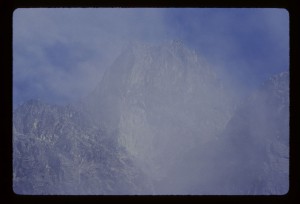 What strikes me about Verlaine’s Clair de Lune, written in 1867, maybe two years after the earlier Promenade, is its air of despair in the moonlight, sad buskers down on their luck in life dancing nonetheless beneath the birds, the statues, and the fountains.
What strikes me about Verlaine’s Clair de Lune, written in 1867, maybe two years after the earlier Promenade, is its air of despair in the moonlight, sad buskers down on their luck in life dancing nonetheless beneath the birds, the statues, and the fountains.
Rather than subscribe to a literal translation of euphemisms, I’ve opted instead for the lurking cynicism and anger masked by Verlaine’s bergamasques, on the theory that our modern vocabulary doesn’t summon up Verlaine’s veiled symbols.
The fun of it lies in comparing Verlaine’s subtle, natureimaged ironies with my more social, blatant explications, the landscape hidden in the moonlight. His paysage choisi, or choice landscape, or chosen countryside, really means “choice” in the sense of “That’s really choice,” “That’s really rich,” or, in fact, bogus: we don’t really have much of a choice, those of us who dance homeless under the moon. The charming masks and masked balls are not so charming. Verlaine sees the pun between a mask and a bergamasque, or a ball. As Oscar Wilde said, “A mask tells us more than a face.”
In fact, the dancers are miserable, “sad under their fantastical disguises.” They sing in the minor key, not the major. (Debussy’s piece is entirely in the major key, showing the futility of trying to relate it to its ex post facto tacked-on title.)
Love may vanquish cares, but it seems to have vanquished the lovers instead. The opportune life has the same double meaning it does in English, both fortunate and opportunistic. It’s not so opportune in any case, as the dancers don’t believe in their good fortune, or at least don’t appreciate it, like so many of our own urban fortunate. Verlaine’s lutists may be wealthy Venetian party animals, but they are poor in spirit.
Their song and the moonlight mingle, so that the last stanza is a pathetic fallacy where people presume that nature imitates their emotions (Tony Christie’s “tears are falling like rain”). Fountains sob with ecstasy, birds dream, while the people sob with loss and have no dreams left.
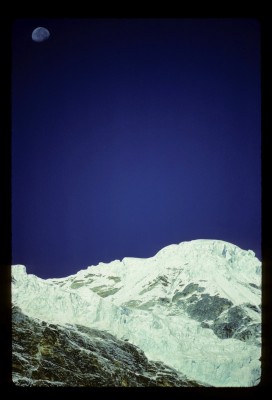 The beauty of nature underlines the sadness of beautiful people. There is nothing sadder than sorrow surrounded by beauty. Nature has no power to draw us out of our misery, or, if it does, depressed people cannot understand it. And it is precisely the beauty of the moonlight that draws pity out of us for the unperceptive dancers. The world is wonderful, but they can’t see it, blinded by their own good fortune.
The beauty of nature underlines the sadness of beautiful people. There is nothing sadder than sorrow surrounded by beauty. Nature has no power to draw us out of our misery, or, if it does, depressed people cannot understand it. And it is precisely the beauty of the moonlight that draws pity out of us for the unperceptive dancers. The world is wonderful, but they can’t see it, blinded by their own good fortune.
In my translation, I haven’t deigned to grant my beautiful people the luxury of party clothes, marble statues, lutes, or fountains (I think of club kids at 4 a.m. by the 72nd Street reflection pool in New York). No birds or bergamasques dawn on New York’s party girls, only squirrels, hydrants, discos.
Debussy’s lute captures the beauty of moonlight. There isn’t much ironic commentary on the dancers, but you can just about hear the sad birds in the trees, dreaming of distant happiness, in the way the central melody rises and falls, fading away finally to a mere sliver of a moon.
The modern folklorist must also substitute hissing for sobbing, a pastel for a landscape, twisting for dancing. It is in the space between the music and its interpretation by a contemporary audience that the poem has to function. According to Paul Roberts, Debussy by 1905 had become aware of the darker aspects of life and his own music (as we all are by a certain age), so anger at the failed ideals of youth was a theme he felt his piece conveyed when he renamed and rewrote it. In a Proustian way, the very act of naming his failure was his path out of it (no one would publish the piece until after he became famous).
Debussy conveys that disillusionment subtly (as does Verlaine), swathing its wounds with moonlight, invoking the wistfulness of youthful hope and promise, and then letting the light sink or slink away, reminiscent of the end of Auden’s poem, as I walked out one evening:
It was late, late in the evening,
The lovers, they were gone,
The clocks had ceased their chiming,
And the deep river ran on.
In Debussy’s case the moon shines on, but Verlaine uses Auden’s water metaphor in his sobbing fountains.

